How to Choose Fresh and High-Quality Spices for Your Kitchen
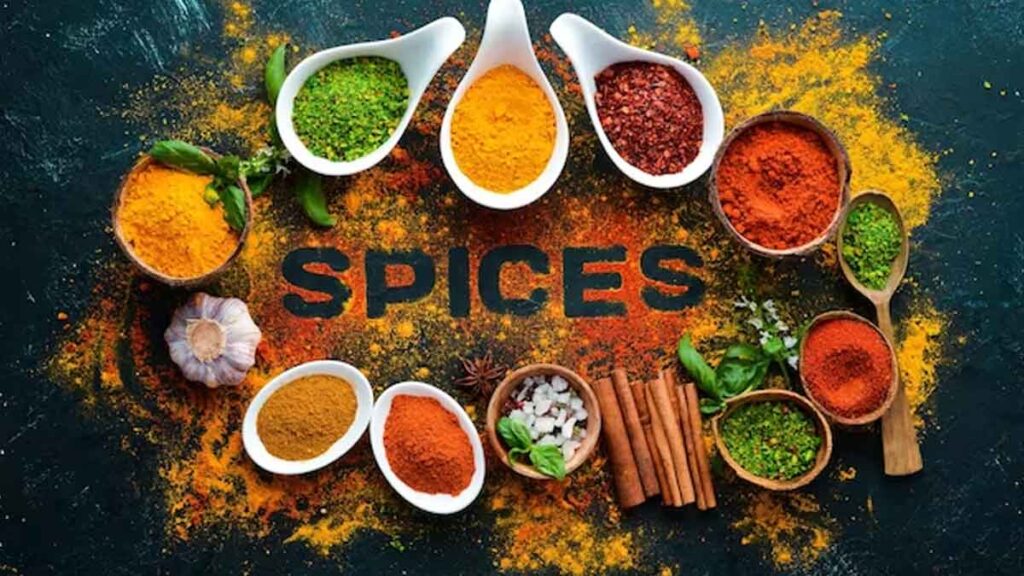
Spices are the soul of every kitchen — they bring aroma, flavor, and warmth to your food. But not all spices are equal. Choosing fresh and high-quality spices can make the difference between a bland dish and an unforgettable one. Whether you’re a home cook, food blogger, or chef, here’s how you can identify and buy only the best spices for your kitchen. Why Fresh and high-Quality Spices Matters Using low-quality or stale spices can ruin even the best recipe. High-quality spices: So, if you want your cooking to stand out, choosing top-quality spices is a must. Step 1: Trust Your Senses The easiest way to judge spice quality? Smell, look, and feel. Smell: Look: Feel: Step 2: Buy Whole Spices When Possible Whole spices often last longer and retain more flavor than ground ones. For example: Grind your spices fresh at home using a spice grinder or mortar and pestle. It takes a few seconds, but the flavor is unbeatable! Step 3: Check Labels & Origin Whether shopping online or in stores, always read labels carefully. Step 4: Buy from Trusted Sources Don’t settle for dusty supermarket jars! Instead: Also, avoid buying spices that are stored in open bins. Exposure to air and light can quickly reduce their potency. Step 5: Store Spices the Right Way Once you’ve found good spices, store them properly to keep their quality intact. Bonus Tip: Know the Shelf Life Spice Type Typical Shelf Life Ground spices 6–12 months Whole spices 2–3 years Spice blends 6 months – 1 year If your spices are losing smell or changing color, it’s time to replace them — even if they look okay. Conclusion Having these Top kitchen spices in your pantry will help you create delicious and aromatic dishes effortlessly. If you have any problems with our ideas or need guidance on how to use these spices effectively, feel free to comment below. You can also reach out to us through our contact section. Don’t forget to drop a comment below to cheer up! Blog Written by Rajhans Digital
Grand Masala: The Royal Blend of Indian Spices
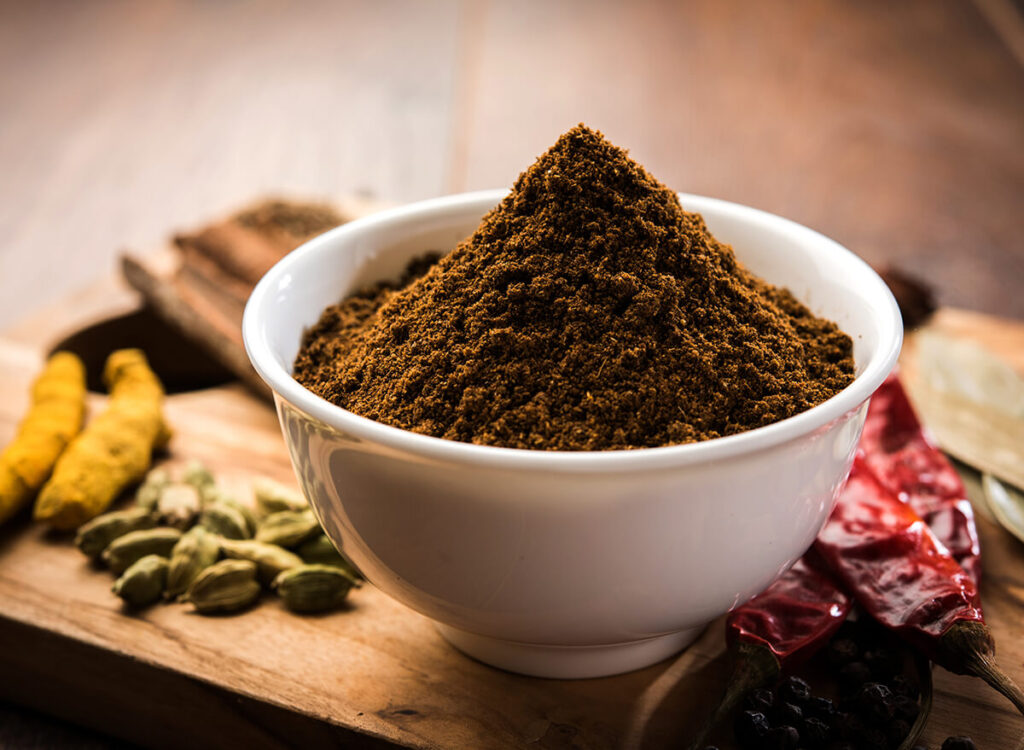
Grand Masala: The Royal Blend of Indian Spices Grand Masala is the soul of Indian cooking—powerful, aromatic, and deeply rooted in tradition. Whether you’re a seasoned chef or a curious home cook, having a jar of this royal spice mix in your kitchen is like having a shortcut to authentic Indian flavor. A Flavorful Tradition in Every Pinch Grand Masala is more than just a spice mix—it’s a bold, aromatic, and versatile blend that carries the essence of Indian cuisine. Known for its deep flavor and rich aroma, Grand Masala (also called “Garam Masala” in many regions) is a household staple in Indian kitchens and a secret ingredient that brings curries, gravies, and snacks to life. Whether you’re cooking a humble dal or a royal biryani, this spice mix adds a distinct warmth and depth that elevates the taste instantly. What is Grand Masala? Grand Masala is a custom blend of ground spices—typically including: Every household and region in India may have its own version of this blend, adjusting the proportions or adding a few extra spices based on tradition and taste. Why It’s Called “Grand” The name “Grand Masala” signifies its richness and complexity. Unlike basic masala blends, Grand-Masala is usually: It is often used in royal recipes, such as Mughlai curries, shahi paneer, or slow-cooked meat dishes. Health Benefits of Grand-Masala While it enhances taste, Grand Masala also comes with impressive health benefits: How to Use Grand Masala Grand Masala is typically added towards the end of cooking to preserve its aroma. Here are a few ways to use it: Homemade vs Store-Bought You can find Grand Masala in most grocery stores, but homemade blends often have a fresher and more tailored taste. If you’re making it at home: Conclusion Having these Top kitchen spices in your pantry will help you create delicious and aromatic dishes effortlessly. If you have any problems with our ideas or need guidance on how to use these spices effectively, feel free to comment below. You can also reach out to us through our contact section. Don’t forget to drop a comment below to cheer up! Blog Written by Rajhans Digital
We all Know about 56 Popular Herbs Uses, Benefits & Where to Find Them in 2025
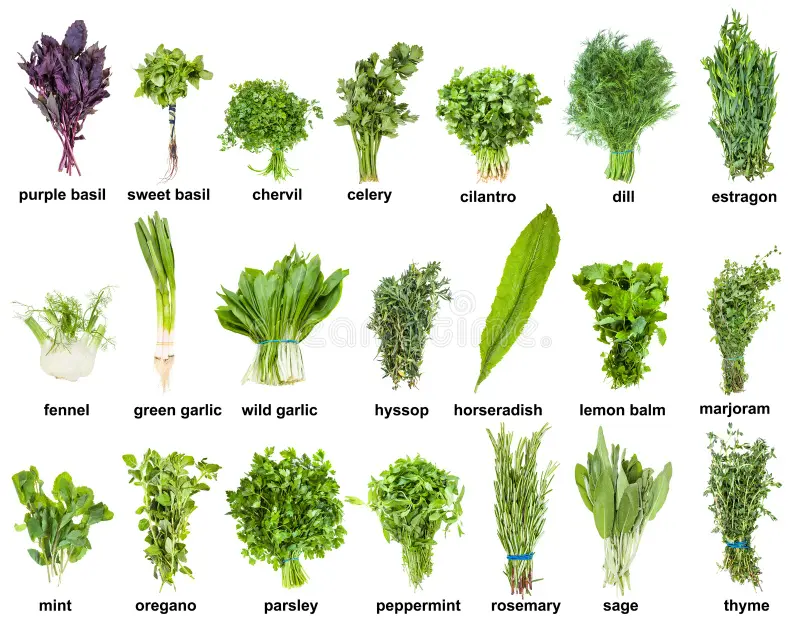
We all Know about 56 Popular Herbs Uses, Benefits & Where to Find Them in 2025 Herbs have been a part of human life for thousands of years. From adding flavor to your favorite dishes to healing common health problems, herbs are nature’s gift packed with nutrients, aroma, and wellness benefits. What Are Herbs? Herbs are small plants with green, tender stems that are used for their leaves, flowers, seeds, roots, or even bark. They’re commonly used in cooking, natural medicine, beauty care, and even aromatherapy. Some herbs grow in wild forests, some in home gardens, and others are cultivated on farms worldwide. Why Include Herbs in Your Life? Herbs offer benefits like: Where Can You Find Herbs? Depending on the herb, you can find them at: Full List of All Popular Herbs We will cover detailed descriptions, benefits, and uses of each popular herb like: Acai, Aloe Vera, Ashwagandha, Ginseng, Chamomile, Turmeric… and many more. Stay tuned for the Ultimate Herb Guide! 😊🌱 1. Acai Description: Dark purple berries from the Amazon rainforest.Where to Find/See: Health food stores, online marketplaces (frozen, powder, supplements).Benefits: Antioxidants, boosts energy, supports heart health.Common Uses: Smoothies, Acai bowls. 2. Aloe Vera Description: Green succulent with gel-filled leaves.Where to Find/See: Home gardens, nurseries, supermarkets (fresh leaves, gels, juices).Benefits: Soothes burns, digestion, skin hydration.Common Uses: Skincare, drinks, digestive aids. 3. Ashwagandha Description: Small shrub with yellow flowers, roots used in supplements.Where to Find/See: Ayurvedic stores, online wellness shops.Benefits: Stress relief, energy boost, sleep aid.Common Uses: Capsules, powders, teas. 4. Asian Ginseng (Panax Ginseng) Description: Forked, pale root known for vitality support.Where to Find/See: Herbal stores, online (capsules, powders).Benefits: Boosts energy, enhances focus, immune support.Common Uses: Energy supplements, teas. 5. Astragalus Description: Long, yellowish root slices used in Chinese medicine.Where to Find/See: Online stores, TCM (Traditional Chinese Medicine) shops.Benefits: Immune booster, anti-inflammatory, heart health.Common Uses: Herbal teas, immune supplements. 6. Bilberry Description: Small dark blue berries like blueberries.Where to Find/See: Organic stores, online (capsules, extracts).Benefits: Eye health, improves circulation, antioxidant-rich.Common Uses: Jams, juices, supplements. 7. Bitter Orange Description: Small citrus fruit with bitter taste.Where to Find/See: Organic markets, online (extracts, capsules).Benefits: Digestion support, energy boost.Common Uses: Weight management supplements. 8. Black Cohosh Description: Tall plant with white flowers, roots used medicinally.Where to Find/See: Health stores, online.Benefits: Menopause relief, hormone balance.Common Uses: Capsules, teas. 9. Boswellia (Indian Frankincense) Description: Resin from Boswellia tree.Where to Find/See: Ayurvedic stores, online.Benefits: Joint health, anti-inflammatory, arthritis support.Common Uses: Capsules, herbal powders. 10. Bromelain Description: Enzyme found in pineapples.Where to Find/See: Health stores, online (supplements).Benefits: Reduces swelling, aids digestion.Common Uses: Anti-inflammatory supplements. 11. Butterbur Description: Large-leaf plant used for migraine relief.Where to Find/See: Online herbal shops.Benefits: Reduces migraines, allergy relief.Common Uses: Capsules, extracts. 12. Cat’s Claw Description: Woody vine from the Amazon with hook-like thorns.Where to Find/See: Herbal stores, online.Benefits: Immune support, reduces inflammation.Common Uses: Teas, supplements. 13. Chamomile Description: Small daisy-like flowers.Where to Find/See: Supermarkets, organic shops (tea bags, dried flowers).Benefits: Promotes sleep, calms nerves, aids digestion.Common Uses: Teas, skincare. 14. Chasteberry Description: Purple flowering shrub, berries used for hormone balance.Where to Find/See: Health stores, online.Benefits: Eases PMS, balances hormones.Common Uses: Capsules, extracts. 15. Cinnamon Description: Bark from cinnamon trees, available as sticks or powder.Where to Find/See: Supermarkets, spice shops.Benefits: Blood sugar control, antioxidant.Common Uses: Baking, cooking, teas. 16. Cranberry Description: Small red berries.Where to Find/See: Supermarkets, pharmacies (juices, supplements).Benefits: Supports urinary tract health, antioxidants.Common Uses: Juices, capsules. 17. Dandelion Description: Common yellow-flowered weed, roots and leaves are used.Where to Find/See: Gardens, organic stores.Benefits: Liver detox, digestion support.Common Uses: Teas, salads. 18. Echinacea Description: Purple coneflower used for immunity.Where to Find/See: Herbal stores, pharmacies.Benefits: Prevents colds, boosts immunity.Common Uses: Teas, supplements. 19. Elderberry Description: Small dark purple berries.Where to Find/See: Organic stores, online (syrups, gummies).Benefits: Cold and flu support, immune booster.Common Uses: Syrups, candies, supplements. 20. Ephedra Description: Leafy shrub with stimulant properties.Where to Find/See: Restricted in many countries. Only at specialized TCM stores (if legal).Benefits: Energy boost, asthma support.Common Uses: Traditional Chinese medicine (use under supervision). 21. European Mistletoe Description: Green-leaved plant with white berries.Where to Find/See: Specialized herbal centers.Benefits: Immune booster, cancer therapy (under doctor’s care).Common Uses: Extracts (medical use). 22. Evening Primrose Oil Description: Oil from seeds of the evening primrose plant.Where to Find/See: Pharmacies, online wellness stores.Benefits: Skin health, PMS relief.Common Uses: Capsules, skin supplements. 23. Fenugreek Description: Small yellowish seeds, leaves also edible.Where to Find/See: Indian grocery stores, spice markets.Benefits: Boosts milk production, improves digestion.Common Uses: Indian cooking, herbal capsules. 24. Feverfew Description: Small plant with daisy-like flowers.Where to Find/See: Herbal stores, online.Benefits: Migraine prevention, reduces inflammation.Common Uses: Capsules, teas. 25. Flaxseed and Flaxseed Oil Description: Tiny brown or golden seeds.Where to Find/See: Supermarkets, organic stores.Benefits: Omega-3 rich, heart health, digestion.Common Uses: Smoothies, salads, baking. 26. Garcinia Cambogia Description: Small greenish fruit, rind used for supplements.Where to Find/See: Online supplement shops.Benefits: Weight management, appetite control.Common Uses: Weight loss capsules. 27. Garlic Description: Bulb with multiple cloves, strong aroma.Where to Find/See: All supermarkets, vegetable markets.Benefits: Heart health, immunity booster.Common Uses: Cooking, capsules. 28. Ginger Description: Knobby root with spicy flavor.Where to Find/See: Grocery stores, vegetable shops.Benefits: Anti-nausea, digestion, anti-inflammatory.Common Uses: Cooking, teas, supplements. 29. Ginkgo Description: Leaves from the ginkgo tree.Where to Find/See: Herbal stores, online.Benefits: Memory support, cognitive function.Common Uses: Capsules, tablets. 30. Goldenseal Description: Root with bright yellow color.Where to Find/See: Herbal shops, online.Benefits: Natural antibiotic, immune support.Common Uses: Capsules, tinctures. 35. Horse Chestnut Description: Large tree with shiny brown nuts (not edible raw), used for vein and leg health.Where to Find/See: Herbal stores, online pharmacies.Benefits: Supports vein health, reduces varicose veins, improves circulation.Common Uses: Capsules, creams. We’re on a journey to discover every powerful herb nature has to offer—one leaf at a time. If you notice any missing, feel free to suggest them in the comments below! Conclusion Having these Top kitchen spices in your pantry will help you create delicious and aromatic dishes effortlessly. If you have any problems with our ideas or need guidance on how to use these spices effectively, feel free to
Garam Masala – The Heart of Indian Flavors by Top Kitchen Spices
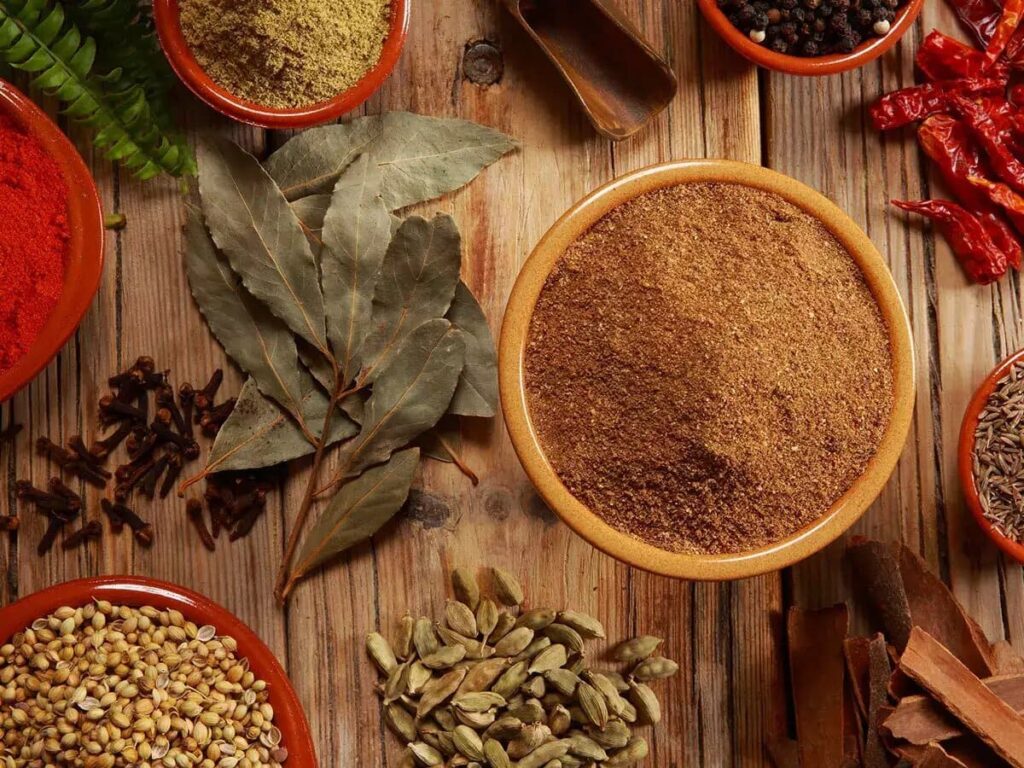
Garam Masala – The Heart of Indian Flavors Garam masala is not just a spice blend; it’s the very soul of Indian cooking. Used across various regions and countless dishes, this aromatic mix is a symbol of the country’s diverse and flavorful culinary heritage. The name garam masala literally translates to “hot spice mix” in Hindi – not hot in terms of spiciness, but for its warming properties that heat the body according to Ayurvedic principles. Garam masala is a blend of ground spices, typically including cinnamon, cloves, cardamom, cumin, coriander, black pepper, and nutmeg. However, the exact composition can vary from region to region and even from one household to another. Some recipes may include bay leaves, fennel seeds, star anise, or dried chilies, depending on regional preferences and culinary traditions. Each ingredient is dry-roasted to release its essential oils, then ground into a fine powder to form a rich, warm, and slightly sweet spice mix. The Origins of Garam-Masala The origins of garam masala can be traced back centuries to North India, where it was created as a warming spice mix to suit colder climates. Over time, it spread across the subcontinent, with each region adapting the blend to its local ingredients and tastes. Its formulation is also influenced by Ayurvedic teachings, which suggest that garam masala increases the body’s internal heat and metabolism, making it a balancing and beneficial addition to meals. Health Benefits of Garam-Masala Beyond flavor, garam masala offers several health benefits: In Ayurveda, it’s believed to balance the body’s doshas and enhance the flow of energy.Culinary Uses of Garam Masala Garam masala is incredibly versatile and used in a wide range of dishes: Unlike other spice mixes, garam masala is often added near the end of cooking to preserve its complex aroma. Making Garam Masala at Home Here’s a basic recipe you can try at home: Ingredients: Instructions: Thoughts By Top Kitchen Spices “Start small, explore, and let your kitchen be the place where taste meets tradition and wellness.” Conclusion Indian cooking is built on layers of flavor — and at the center of it all are your spices. Whether you’re a seasoned cook or just starting your culinary journey, Kitchen King Spices and essential kitchen spices are your best friends in the kitchen. Having these Top kitchen spices in your pantry will help you create delicious and aromatic dishes effortlessly. If you have any problems with our ideas or need guidance on how to use these spices effectively, feel free to comment below. You can also reach out to us through our contact section. Don’t forget to drop a comment below to cheer up! Blog Written by Rajhans Digital
How Expert People Identify High-Quality Spices for Your Kitchen from 20s
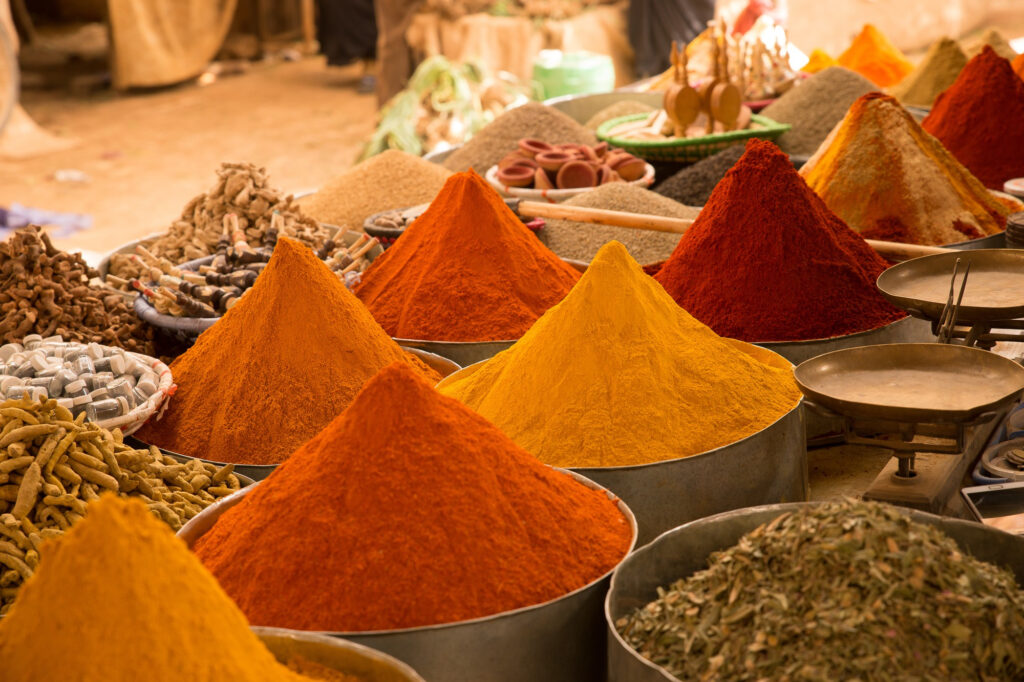
How to Identify High-Quality Spices for Your Kitchen When it comes to cooking healthy meals at home, spices do more than just add flavor—they bring powerful health benefits. But not all spices are created equal. Using high-quality spices like turmeric, ginger, and cinnamon can significantly impact not only your dish’s taste but also your overall wellness. Here’s how to identify top-tier spices for your kitchen so you can cook with confidence and support your health naturally. 1. Check for Color and Aroma High-quality spices are vibrant in color and rich in aroma. For example: The best way to judge spices is by using your senses. Fresh spices should have a distinct and inviting smell. If they don’t smell strong when you open the jar or pouch, they’ve likely lost their potency. 2. Read the Label When buying packaged spices, always read the ingredient label. Look for: Avoid blends that don’t clearly list all ingredients or contain anti-caking agents, preservatives, or artificial colors. 3. Buy Whole When Possible Whole spices tend to last longer and retain their natural oils and flavor better than pre-ground ones. For example: Grinding spices at home with a spice grinder or mortar and pestle keeps them fresher and more potent. 4. Look for Trusted Sources Not all spice brands maintain the same quality standards. Choose trusted retailers or local markets known for sourcing fresh, authentic products. If you’re shopping online, check reviews and certifications like USDA Organic or India Organic. You can also explore specialty spice stores or reputable websites that offer details about harvest times, batch numbers, and sourcing practices. 5. Test a Small Amount When trying a new spice or brand, buy a small quantity first and test it: 6. Understand Shelf Life Even the best spices don’t last forever. Ground spices typically lose their potency after 6–12 months, while whole spices can last 2–3 years if stored properly. Keep them in airtight containers away from heat, light, and moisture to preserve freshness. Thoughts By Top Kitchen Spices “Keep experimenting, stay curious, and let the magic of spices transform your kitchen into a flavorful adventure!” Storing Your Spices for Maximum Freshness To preserve your spice blends like Kitchen King, keep them in: Fresh spices = flavorful food. Simple as that. Check other :- Benifits of our spices Conclusion selecting high-quality spices is essential for enhancing the flavor, aroma, and nutritional value of your dishes. By focusing on factors such as vibrant color, strong aroma, proper texture, clear labeling, and reputable sourcing, you can ensure that your spices contribute positively to your culinary creations. Remember to store them correctly to maintain their potency over time. Blog Written by Rajhans Digital
Whole vs Ground Spices : Which One Should You Buy?

Whole vs ground spices When it comes to cooking with spices, one common question is: Should I use whole spices or ground ones? Each type has its own strengths, and choosing the right one can enhance the flavor, aroma, and freshness of your meals. Let’s explore the differences and help you decide which to keep in your kitchen. Whole Spice – Natural and Powerful Whole spices are unprocessed — just dried parts of plants like seeds, pods, or bark. Popular examples include: Advantages of whole spice: Disadvantages: Whole spices are perfect if you enjoy experimenting with flavors and cooking from scratch. Ground Spices – Quick and Convenient Ground spice are simply powdered versions of whole spices. Examples include: Advantages of ground spice: Disadvantages: Ground spices are great for beginner cooks or anyone who wants fast results without grinding. When to Use Which? Use whole spice when: Use ground spice when: Storage Tips Combine Both for the Best Results Many chefs and home cooks prefer a mix of both types. For example: If you have a spice grinder, you can buy whole spices in bulk and grind them fresh when needed — giving you the benefits of both freshness and convenience. Conclusion So, whole vs ground spice — which should you buy?If you love bold flavors and don’t mind a little extra effort, whole spices are a must. If convenience is your priority, ground spices are perfect. But the best choice? Keep both in your kitchen and use them wisely depending on the recipe. Having these Top kitchen spices in your pantry will help you create delicious and aromatic dishes effortlessly. If you have any problems with our ideas or need guidance on how to use these spices effectively, feel free to comment below. You can also reach out to us through our contact section. Don’t forget to drop a comment below to cheer up! Blog Written by Rajhans Digital
Kitchen King Spices & Essential Indian Spices: Unlocking the Magic of Spice Cooking in 2025!

Introduction of Kitchen King Spices & Essential Indian Spices: Unlocking the Magic of Spice Cooking in 2025! When you step into an Indian kitchen, there’s one thing you’ll always find — a box full of colorful, aromatic spices that bring every dish to life. From the comforting aroma of cumin to the bold flavor of red chili powder, kitchen spices are at the heart of every Indian meal. But if there’s one spice blend that rules them all, it’s Kitchen King Spices — a flavorful all-rounder that truly lives up to its name. What is Kitchen King Spices ? Kitchen King is a blended spice mix, often referred to as the “master” of masalas. It’s designed to add rich aroma, deep color, and well-balanced taste to a variety of Indian dishes, especially curries, sabzis, and gravies. One of the most popular and widely loved versions is MDH Kitchen King Spices — a household staple across Indian homes. This signature blend includes a mix of coriander, turmeric, chili, cumin, black pepper, and other robust Indian spices. Whether you’re cooking paneer butter masala, aloo gobi, or vegetable biryani, just a spoonful of Kitchen King Spices can transform your dish into a restaurant-style delight. Essential Kitchen Spices in Every Indian Home An Indian spice kitchen isn’t complete without a selection of go-to spices that create the backbone of most recipes: Each spice has its own identity — and when combined thoughtfully, they create magic in your cooking. The Role of Spices in Indian Cooking In spice cooking, it’s not just about flavor — it’s about balance, aroma, color, and even healing. Ayurveda has long praised the medicinal properties of Indian spices, and every Indian dish reflects this harmony of taste and health. Blends like Kitchen King Spices are crafted to save you time while still delivering that authentic taste. It’s perfect for both beginners and expert cooks who want to add depth without overthinking every single spice. How to Use Kitchen King Spices in Your Cooking Here are a few simple ways to incorporate this magical masala: Remember, it’s a spice blend — so it already includes multiple kitchen spices in the right proportion. Storing Your Spices for Maximum Freshness To preserve your spice blends like Kitchen King, keep them in: Fresh spices = flavorful food. Simple as that. Spice Kitchen Spices: Going Global The popularity of Indian spice kitchens isn’t just limited to South Asia anymore. Thanks to global food trends and fusion recipes, spice kitchen spices are now being stocked in kitchens from London to Los Angeles. Home cooks and chefs alike are exploring spice cooking to add a bold twist to traditional recipes — whether it’s spiced hummus, turmeric lattes, or tandoori tacos. Thoughts By Top Kitchen Spices “Keep experimenting, stay curious, and let the magic of spices transform your kitchen into a flavorful adventure!” Conclusion Indian cooking is built on layers of flavor — and at the center of it all are your spices. Whether you’re a seasoned cook or just starting your culinary journey, Kitchen King Spices and essential kitchen spices are your best friends in the kitchen. Having these Top kitchen spices in your pantry will help you create delicious and aromatic dishes effortlessly. If you have any problems with our ideas or need guidance on how to use these spices effectively, feel free to comment below. You can also reach out to us through our contact section. Don’t forget to drop a comment below to cheer up! Blog Written by Rajhans Digital
Most Common Kitchen Spices and Their Hidden Health Benefits in 2025!
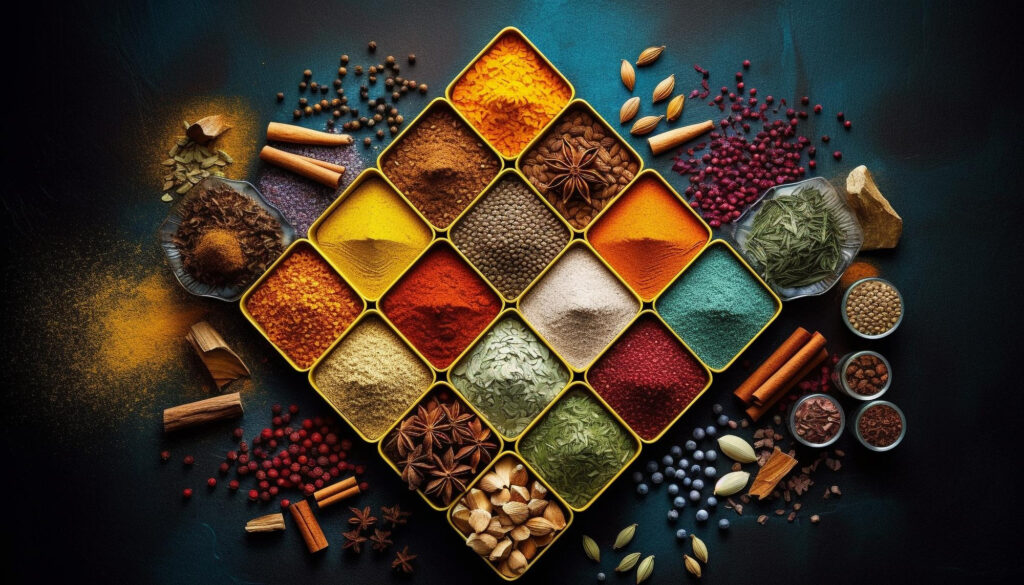
Introduction of Most Common Kitchen Spices and Their Hidden Health Benefits in 2025! Spices are the soul of every kitchen. Beyond adding incredible flavor, many of the most commonly used spices offer surprising health benefits. From boosting digestion to fighting inflammation, your spice rack is a hidden wellness arsenal. Let’s explore the health-boosting powers of everyday spices you probably already have at home. 1. Turmeric – The Natural Anti-Inflammatory Hero Turmeric, known for its bright golden color, contains curcumin, a powerful compound with anti-inflammatory and antioxidant effects.🟡 Health Benefits: 2. Ginger – The Stomach Soother Ginger is a common spice that helps with nausea, digestion, and cold symptoms. It’s both spicy and healing.🟠 Health Benefits: 3. Cinnamon – The Blood Sugar Balancer Loved for its sweet warmth, cinnamon helps regulate blood sugar levels and adds depth to both sweet and savory dishes.🟤 Health Benefits: 4. Black Pepper – The Nutrient Booster Often taken for granted, black pepper actually enhances the absorption of nutrients and delivers antioxidants.⚫ Health Benefits: 5. Cumin – The Digestion Champion Cumin is widely used in Indian and Middle Eastern cooking and supports gut health.🟤 Health Benefits: 6. Clove – The Oral Health Defender Cloves are small but mighty, known for their antibacterial and anesthetic properties.🟣 Health Benefits: Thoughts By Top Kitchen Spices “Your spice rack is more than just a shelf of flavor—it’s a shelf of wellness. By learning the hidden health benefits of the spices you already use every day, you’re not only becoming a better cook but also a smarter, healthier one. Start small, explore, and let your kitchen be the place where taste meets tradition and wellness.” Which spice is best for boosting immunity by Rajhans Digital? Turmeric and garlic are among the best immunity-boosting spices due to their anti-inflammatory and antioxidant properties. What’s the best way to store spices to keep their health benefits intact? Store spices in airtight containers in a cool, dark place away from heat and moisture to preserve their potency and flavor. Keep Exploring the World of Spices With Top Kitchen Spcies! Now that you’ve discovered the top kitchen spices every home cook should have in 2025, it’s time to spice up your own kitchen! From flavor-boosting basics to health-packed powders, each spice has a special place in your cooking journey. ✅ Want to learn how to use these spices in your recipes?✅ Curious about their health benefits and storage tips?✅ Ready to become a spice master at home? Conclusion Having these Top kitchen spices in your pantry will help you create delicious and aromatic dishes effortlessly. If you have any problems with our ideas or need guidance on how to use these spices effectively, feel free to comment below. You can also reach out to us through our contact section. Don’t forget to drop a comment below to cheer up! Blog Written by Rajhans Digital
Believe Top 5 Must-Have Spices in Every Kitchen in India

About Top 5 Must-Have Spices in Every Kitchen in India India is a land of rich flavors, and no Indian kitchen is complete without a powerful mix of essential spices. This blog explores the top 5 must-have spices that every Indian kitchen should stock—spices that not only bring taste to your meals but also offer incredible health benefits. From turmeric’s golden glow to cumin’s earthy aroma, these staples are the soul of Indian cooking. Top 5 Must-Have Kitchen Spices: 1. Turmeric A golden-yellow spice known for its earthy flavor and powerful anti-inflammatory properties. Commonly used in curries, rice dishes, and even wellness drinks. Use It For: Golden milk, lentils, stir-fry, soups.Bonus: Rich in curcumin, which supports immunity and joint health. 2. Cumin This warm, nutty spice brings a smoky depth to dishes. A key ingredient in Indian, Middle Eastern, and Mexican cuisines. Use It For: Curry powders, chili, roasted vegetables, tacos.Bonus: Helps with digestion and may reduce bloating. 3. Black Pepper Often overlooked, this basic spice enhances the flavor of nearly every dish. It pairs perfectly with salt but also stands strong on its own. Use It For: Eggs, salads, meats, marinades.Bonus: Aids in nutrient absorption—especially turmeric! 4. Cinnamon A sweet and woody spice that works beautifully in both sweet and savory recipes. It’s also packed with antioxidants. Use It For: Baking, oatmeal, stews, teas.Bonus: Can help regulate blood sugar levels. 5. Ginger Pungent and spicy with a hint of sweetness, ginger is both flavorful and healing. It can be used fresh or dried. Use It For: Soups, sauces, teas, stir-fry.Bonus: Fights nausea and boosts digestion. Thoughts By Top Kitchen Spices “In every grain of spice, there’s a story of tradition, culture, and flavor.” What are the must-have spices for every kitchen in India? In 2025, essential kitchen spices include turmeric, cumin, black pepper, cinnamon, chili powder, coriander, garlic powder, paprika, cardamom, and mustard seeds. These spices are versatile and perfect for both everyday cooking and special dishes. Why are these spices considered for Essential Indian spices? These spices enhance flavor, add depth to recipes, and come with added health benefits like anti-inflammatory and antioxidant properties—making them great for taste and wellness. Keep Exploring the World of Spices With Top Kitchen Spcies! Now that you’ve discovered the top kitchen spices every home cook should have in 2025, it’s time to spice up your own kitchen! From flavor-boosting basics to health-packed powders, each spice has a special place in your cooking journey. ✅ Want to learn how to use these spices in your recipes?✅ Curious about their health benefits and storage tips?✅ Ready to become a spice master at home? Conclusion Having these Top kitchen spices in your pantry will help you create delicious and aromatic dishes effortlessly. If you have any problems with our ideas or need guidance on how to use these spices effectively, feel free to comment below. You can also reach out to us through our contact section. Don’t forget to drop a comment below to cheer up! Blog Written by Rajhans Digital
Sustainable & Ethical Sourcing of Spices: What You Should Know by Top Kitchen Spices
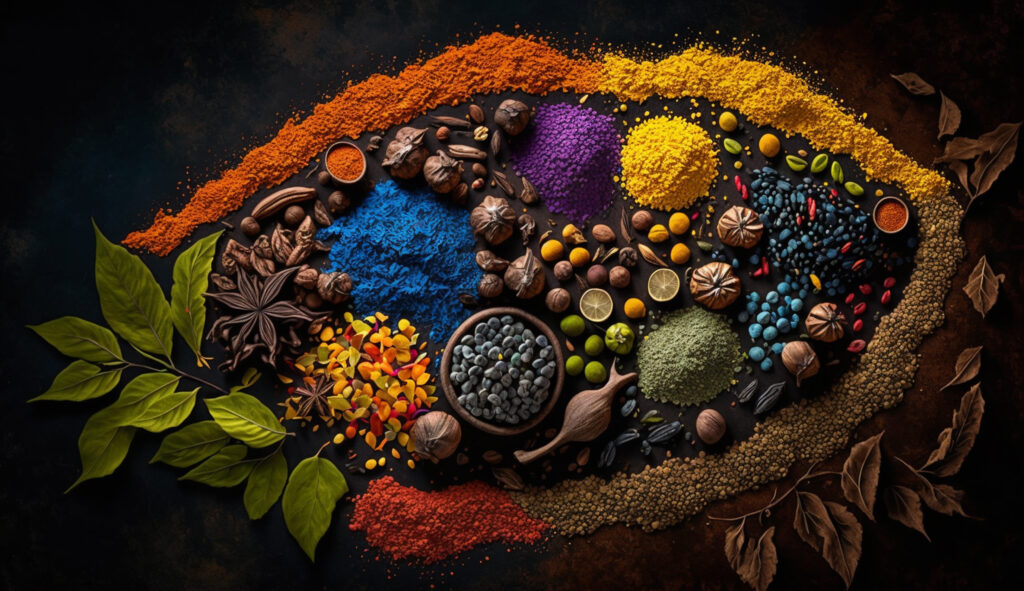
Sustainable & Ethical Sourcing of Spices: What You Should Know by Top Kitchen Spices In a world where conscious consumerism is growing, ethical sourcing of spices is becoming more than just a trend—it’s a responsibility. From the vibrant markets of India to the rich spice farms of Sri Lanka, the journey of spices is long, and how they’re sourced matters deeply for farmers, the environment, and you—the end consumer. In this blog, we’ll explore what ethical sourcing means in the spice industry, why it’s important, and how you can support sustainable spice practices that empower communities and protect the planet. Ethical sourcing refers to the practice of purchasing spices in a way that is socially responsible, environmentally sustainable, and economically fair. It ensures that: When you buy ethically sourced spices, you’re not just adding flavor to your food—you’re supporting a global movement for good. Why Sustainable and Ethical Sourcing Matters 1. Supports Small-Scale Farmers Most spices are grown in developing countries by small, family-run farms. Ethical sourcing helps ensure these farmers receive fair prices and better working conditions. 2. Protects the Environment Sustainable spice farming avoids harmful chemicals, promotes biodiversity, and conserves water—helping maintain soil health and reduce carbon footprint. 3. Promotes Quality Ethically sourced spices are often fresher and more potent. Why? Because they’re grown, harvested, and processed with care—without cutting corners. 4. Empowers Women & Local Communities Many spice farms involve women in cultivation and processing. Ethical trade initiatives often focus on gender equality, education, and community development. How to Identify Ethically Sourced Spices Not sure where to start? Here are signs and certifications to look for: Also, research spice brands that are transparent about their sourcing, farming partners, and environmental practices. Sustainable Sourcing: Ethical Sourcing in Everyday Cooking You don’t have to change your entire lifestyle to make a difference. Here’s how to start small: Final Thoughts by Top Kitchen Spices Sustainable and ethical spice sourcing focuses on environmentally friendly and socially responsible practices throughout the spice supply chain, from farm to table. It involves using sustainable farming methods, ensuring fair treatment of farmers and workers, and promoting transparency and traceability. Thoughts By Top Kitchen Spices “Start small, explore, and let your kitchen be the place where taste meets tradition and wellness.” Conclusion Indian cooking is built on layers of flavor — and at the center of it all are your spices. Whether you’re a seasoned cook or just starting your culinary journey, Kitchen King Spices and essential kitchen spices are your best friends in the kitchen. Having these Top kitchen spices in your pantry will help you create delicious and aromatic dishes effortlessly. If you have any problems with our ideas or need guidance on how to use these spices effectively, feel free to comment below. You can also reach out to us through our contact section. Don’t forget to drop a comment below to cheer up! Blog Written by Rajhans Digital
